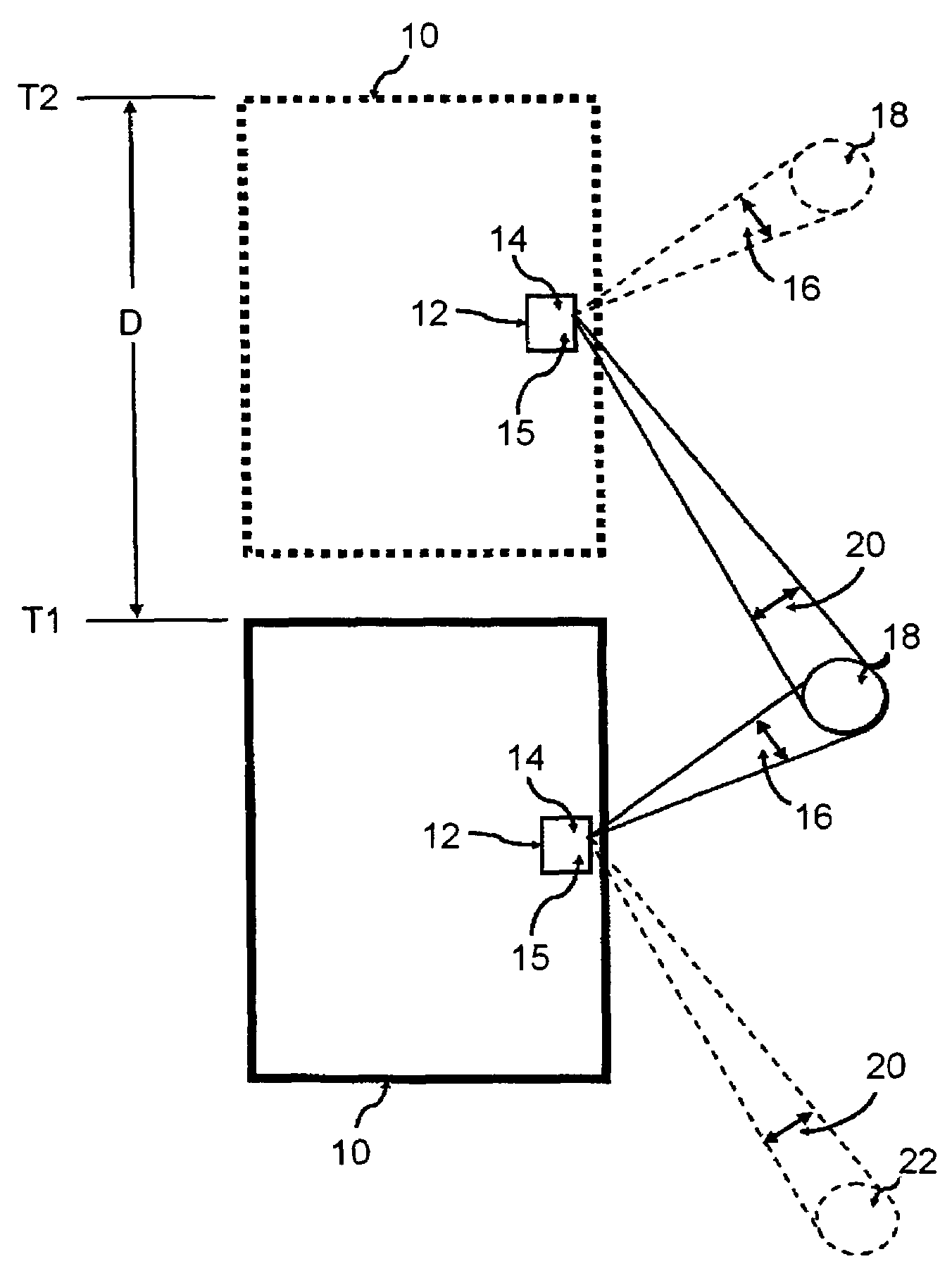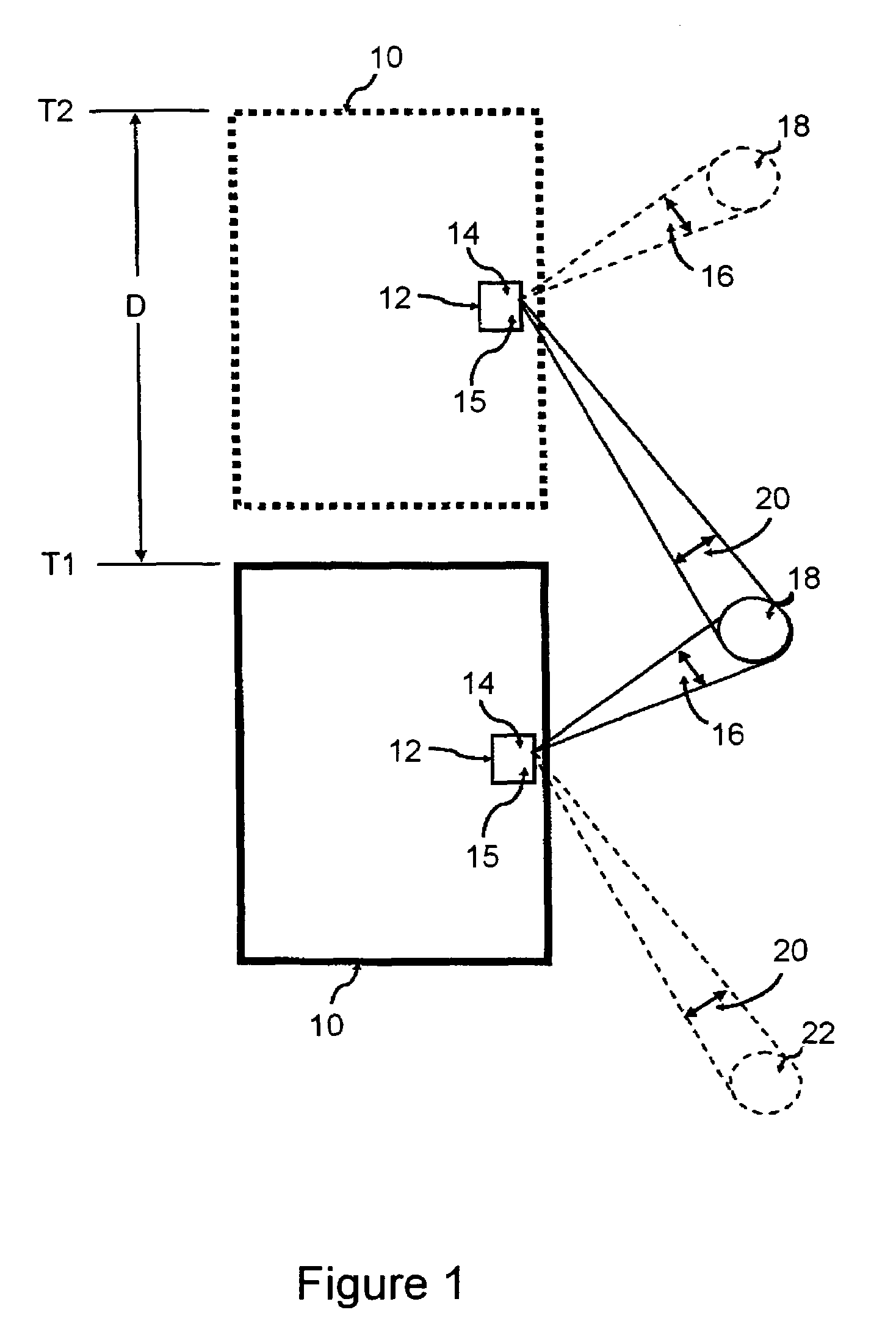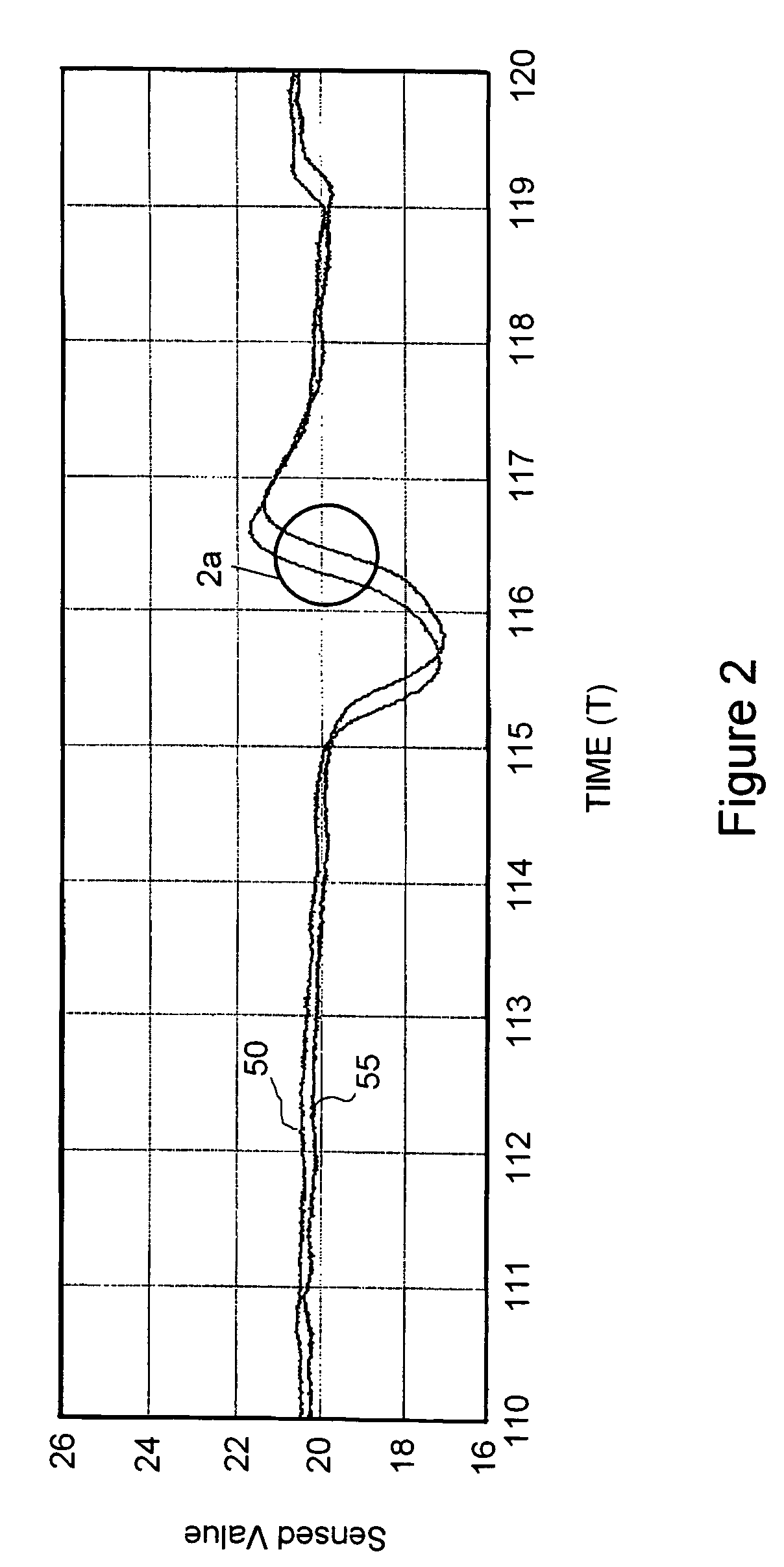Method of distinguishing, from a moving platform, stationary objects from moving objects
a technology of moving platforms and objects, applied in the field of sensing or detecting objects, can solve the problems of sudden speed change of traffic ahead, blind spot, dangerous distraction of driver's attention from the front to make shoulder checks, etc., and achieve the effect of reducing false alarms
- Summary
- Abstract
- Description
- Claims
- Application Information
AI Technical Summary
Benefits of technology
Problems solved by technology
Method used
Image
Examples
Embodiment Construction
[0024]In this description of the invention, the following terms shall have the following meanings:[0025]The term moving platform shall mean any type of vehicle or other mobile device which moves, whether through the use of wheels or otherwise. The most common type of moving platform is considered to be motor vehicles such as cars, trucks, busses and the like, but the present invention can also be applied to many other types of moving devices or machines. The term moving platform is intended to comprehend all such devices.[0026]The term detector means any type of device that can detect a feature or quality of a sensed or target area. The term detector includes active detectors, which send out a signal whose reflection is measured, as well as passive detectors which merely sense an amount of a given property or thing, for example, infrared or IR detectors. The most preferred form of detector is a passive infrared detector, for various reasons such as cost of sensor, ease of use and re...
PUM
 Login to View More
Login to View More Abstract
Description
Claims
Application Information
 Login to View More
Login to View More - R&D
- Intellectual Property
- Life Sciences
- Materials
- Tech Scout
- Unparalleled Data Quality
- Higher Quality Content
- 60% Fewer Hallucinations
Browse by: Latest US Patents, China's latest patents, Technical Efficacy Thesaurus, Application Domain, Technology Topic, Popular Technical Reports.
© 2025 PatSnap. All rights reserved.Legal|Privacy policy|Modern Slavery Act Transparency Statement|Sitemap|About US| Contact US: help@patsnap.com



